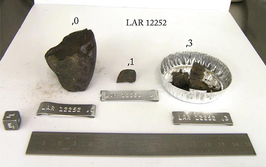Outwitting Food Fraudsters
Developing an effective strategy to combat food fraud can be challenging; it means thinking on your feet and staying ahead of the game.
Michèle Lees |
Having coordinated one of the earliest EU-funded projects on food authenticity (1) over 20 years ago, it never ceases to amaze me how history repeats itself. Yes, analytical techniques have become more sophisticated; and yes, huge strides in computer technology have made data treatment and analysis “easier”. Yet the fraudsters continue to adulterate food products, replace expensive ingredients with cheaper ones, mislabel provenance, and make false claims.
The increasing complexity of the food supply chain and events such as the highly publicized horsemeat scandal in Europe ensure that food fraud remains in the spotlight. The food industry is taking the situation seriously. The GFSI (2) is set to publish its guidance document later in 2016, outlining its recommendations to mitigate the risk of food fraud. One of its key elements is a requirement for food operators to put in place a “food fraud vulnerability control plan” describing measures, including an analytical testing strategy, to target food fraud risk.
Setting up an effective food fraud testing strategy is a big challenge for the analytical laboratory. It has to take into account both the type of product and the potential food fraud risk associated with it. A useful starting point is to search for evidence of previous instances of fraud; either from one’s own analytical data, from information from the relevant industry branch association, or from publically-available databases such as the USP Food Fraud database (3). It is worth asking a few questions about the product itself. Does it claim to be something in particular: extra virgin olive oil, organic eggs, for example? Is there a cheaper extender that could be added without excessively modifying the sensory profile or functional properties? Is it a premium product, financially worth adulterating?
Once susceptibility to fraud is established, it’s then time to look for a suitable analytical solution. The simplest approach is to check the composition of the product or ingredient in the hope of spotting an added adulterant or the lack of an authentic component. A commodity like fruit juice, for example, may be adulterated by adding extenders like water, sugar, and cheaper fruit – or its label may misrepresent claims of provenance or natural vitamin content. If multiple adulterations are suspected, then a whole battery of different tests will be needed.
Today’s trend is towards a more holistic approach to product testing. Spectroscopic techniques (NIR, MIR, FTIR, NMR, and Raman) are used to provide an overall picture of the food product and are able to highlight potential problems by comparison with a reference database. Our laboratory has successfully applied 1H NMR as a profiling technique to verify honey authenticity (4). Honey has been identified as one of the top ten products at risk from fraud – most often by intentional adulteration with cheap sugar syrups. A relatively new adulterant is high fructose syrup (HFS) from rice, a practice that often slips under the radar of most laboratory methods. The NMR spectrum of the “whole” honey sample is used to identify adulteration markers directly, linked either to the addition of sugar syrups or to practices aimed at masking the addition of sugar syrups.
But even when you think you’ve found the ideal solution to a specific problem, the fraudsters come up with a way round it. One of the best examples of this is the authenticity testing of vanilla that we perform routinely in our laboratory. Natural vanilla flavor from vanilla beans commands a significantly higher price than synthetic counterparts. In the early days, quantification of natural vanilla constituents – vanillin, p-hydroxybenzaldehyde (pHB) – was sufficient. However, the broad natural variability of these components meant that the method lacked the sensitivity needed to detect low-level adulteration. Measuring the total deuterium and/or carbon-13 content of vanillin using isotope ratio mass spectrometry (IRMS) became the method of choice. It soon became evident, however, that it was possible to enrich synthetic vanillin in 13C to give the same overall result as vanillin extracted from beans. Interest then turned to 2H-NMR to characterize the origin of vanillin by measuring 2H/1H ratios at specific sites on the vanillin molecule. This is the SNIF-NMR method, a technique pioneered by Eurofins to detect various sophisticated frauds in a number of foods and beverages. Interestingly enough, cases in which synthetic vanillin had been sophisticatedly manipulated still turned up in our lab. A minor peak in the 2H-NMR spectrum was identified as belonging to a doubly-deuterated molecular species, a highly unlikely occurrence in natural isotopic abundance (5). Further evidence that clever fraudsters will go to great lengths – if it’s worth their while.
No complaints from me though. The need to constantly develop, modify, and improve analytical techniques in the fight against food fraud will keep analytical chemists in employment for many years to come – and provide a wealth of topics for The Analytical Scientist!
- FAIM – Food Authenticity: Issues and Methodologies N° AIR3-CT94-2452.
- GFSI – Global Food Safety Initiative, a collaborative effort providing guidance on food safety management systems. www.mygfsi.com/
- USP (US Pharmacopeial Convention) Food Fraud Database. www.foodfraud.org
- M. Spiteri et al., “Fast and global authenticity screening of honey using 1H-NMR profiling”, Food Chem, 189, 60–66 (2015). PMID: 26190601.
- GS Remaud et al., “Detection of sophisticated adulterations of natural vanilla flavors and extracts: application of the SNIF-NMR method to vanillin and p-hydroxybenzaldehyde”, J Agric Food Chem, 45, 859–866 (1997).
When Michèle joined Eurofins in the early 1990s after a PhD in Molecular Chemistry, little did she think that the young start-up from the University of Nantes would become the international group of analytical laboratories that it is today. The laboratory’s focus then was on developing stable isotope analyses to check the authenticity of foods and beverages. Having both coordinated and participated in several EU-funded projects on food authenticity, Michèle’s research efforts are now concentrated on the latest non-targeted analytical approaches as an early warning to identify food fraud risk. She adds, “In over 25 years of working in the field of food authenticity and the development of new methods to detect food fraud, keeping up with those analytical chemists tempted by the Dark Side has always been the greatest challenge!”

















